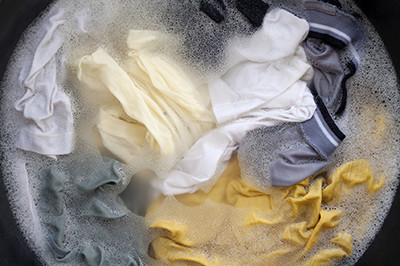Why is my washing machine not draining? There are several reasons why your washing machine might back up. But is it the washer itself, or is it an issue in the plumbing? You should be able to narrow it down by considering the following scenarios.
1. Water is not draining out of the washer at all
There shouldn’t be any water in the drum when the washing machine cycle is finished. If there is, the chances are high that your washing machine is malfunctioning. You will need to call an authorized repair company to come fix it. If it turns out that this isn’t the problem, you will need to consider the next scenario.

2. Water is draining out of the washer but is backing up at the pipes on the wall or the floor
The washing machine drain box is where the lines and hoses from your washing machine connect to your home’s plumbing. If the water is backing up there, it’s a sign that the problem is in the plumbing. Below are some of the most common causes of a washing machine back up.
3. The kitchen and washing machine share the same drain
In many homes, kitchen appliances and the washer drain through the same pipe. Grease and food often build up in that pipe, slowing the water flow. If it gets bad enough, it might stop altogether. This not only backs up kitchen appliances but can also back up your washing machine as well.
Sometimes, water might back up in the kitchen sink while you’re doing a load of laundry, or your bathtub will fill with water. Either case means that your main drain line is clogged. You need to call a professional to clear the drain for you.
Luckily, you can avoid major clogs by not putting food and grease down your kitchen drain. There are also enzymes available that can help keep pipes clear and remove minor blockages. Enzymes won’t fix a serious clog. You will need to get your drains cleaned professionally for that.
4. The washing machine uses too much water for the drain
The pipe that drains your washer might be too small for the water capacity of the machine. Imagine trying to pour a gallon of water through a small funnel all at once. The water can’t exit the funnel fast enough, so it overflows.
This is similar to what can happen if your washing machine dumps too much water into the drain. If that’s the case, you end up with a backed-up washer, similar to the overflowing funnel, though we hope that it doesn’t come to that. Often, older homes have 1½-inch washing machine drain lines. Modern washers are designed for 2-inch drain lines.
If you think this might be the problem, talk to your plumber about getting it checked out.
5. House has cast-iron pipes
Some older homes have cast-iron pipes. The problem is that cast-iron pipes have a habit of building up sludge and rust if not used enough or if the home sits empty for a while. Cast iron pipes need a flow of water to keep everything clear. If enough sludge builds up, you may need to get the pipes cleaned or replaced.
6. The p-trap is clogged
The p-trap is a section of pipe in the shape of a U and is behind the wall. It serves a few purposes, but right now we’re concerned with its ability to catch debris. As water flows through it, sand, lint and other things sink to the bottom of the U. This helps prevent clogs further down the line. If the p-trap gets too full and clogs, it can make your washer back up.
This is likely to be the problem if you see water at the wall, but you don’t see any of the other symptoms we mentioned above. You’ll need to call a licensed plumber to clear the p-trap.
The good news is that all of these problems can be fixed. Proper drain maintenance and being careful with what you put down the drain can help to keep these problems from happening. If you’re already having problems with a backed-up washer, our professional plumbers are available 24 hours. Ask us a question or schedule service today! You can also reach our team at 505-761-9644.


